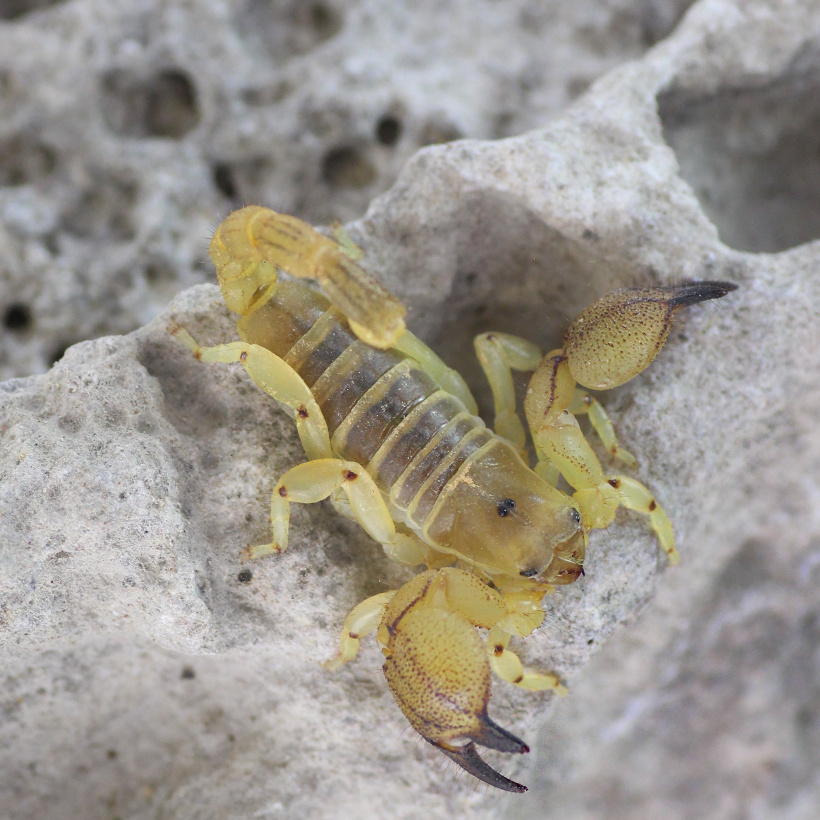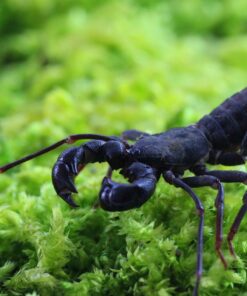Are scorpions insects, spiders or something else entirely?
How toxic are scorpions?
What is the attitude of scorpions?
Scorpions are relatively easy to keep. Depending on the country of origin and climate zone, the terrarium should be set up accordingly. Animals from tropical countries need a high layer of forest humus, a hiding place and a water bowl. The appropriate temperature and humidity should not be a problem with a lamp and a spray bottle.
With desert scorpions, the mistake is often made of keeping them completely dry on a thin layer of sand and additionally maintaining a high temperature in the terrarium. But if you observe desert scorpions in nature, you know that they can only survive in this hostile environment because they dig deep burrows. This lowers the temperature and increases the humidity. Therefore, a high layer of loamy desert sand should be used as substrate in the terrarium. This makes digging possible and the desert scorpion can live out its instincts.
Some scorpions are very social and can be kept in groups. However, you will find the exact instructions for this with the different species.
The offspring climb onto the mother's back shortly after birth. This way they move around with her, whereby the mother moves particularly carefully and slowly during this time. Nevertheless, if a young still happens to fall down, she picks it up with her claws and puts it back on her back.
The scorpion mother secretes a special fluid over her back skin, which her young feed on. The offspring are also defended since the mother is more aggressive than normal during this time.










